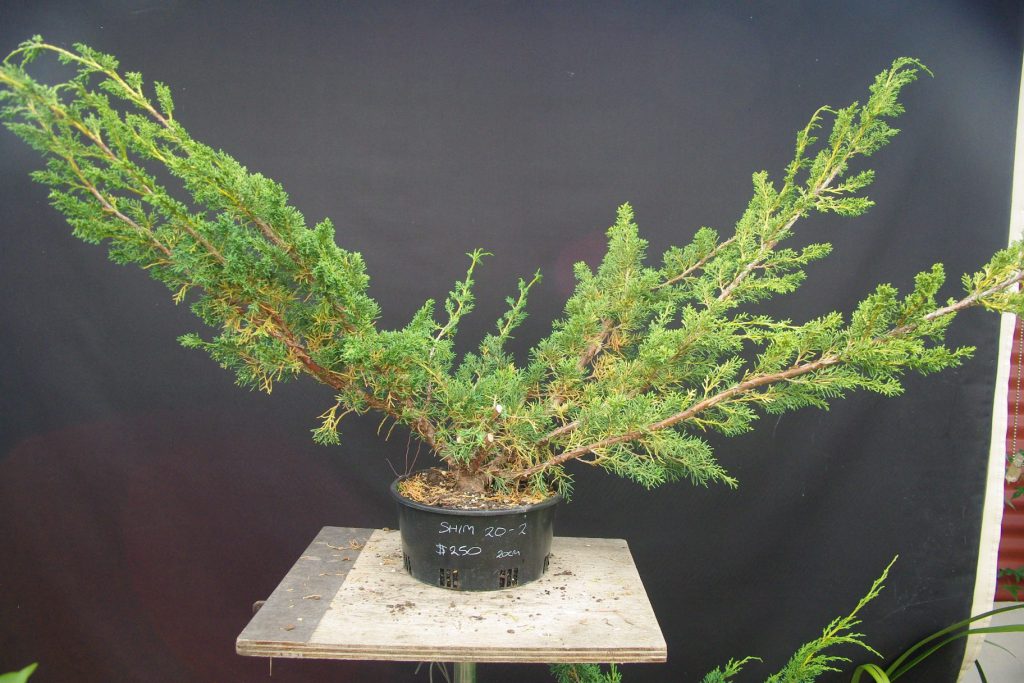Slow to grow but first class as a bonsai specimen, advanced shimpaku are hard to find. These trees were grown in pots for 3-5 years to establish good roots and some low bends and twists in the trunks.Here are some photos of the process I use to get interesting trunks on shimpaku junipers.
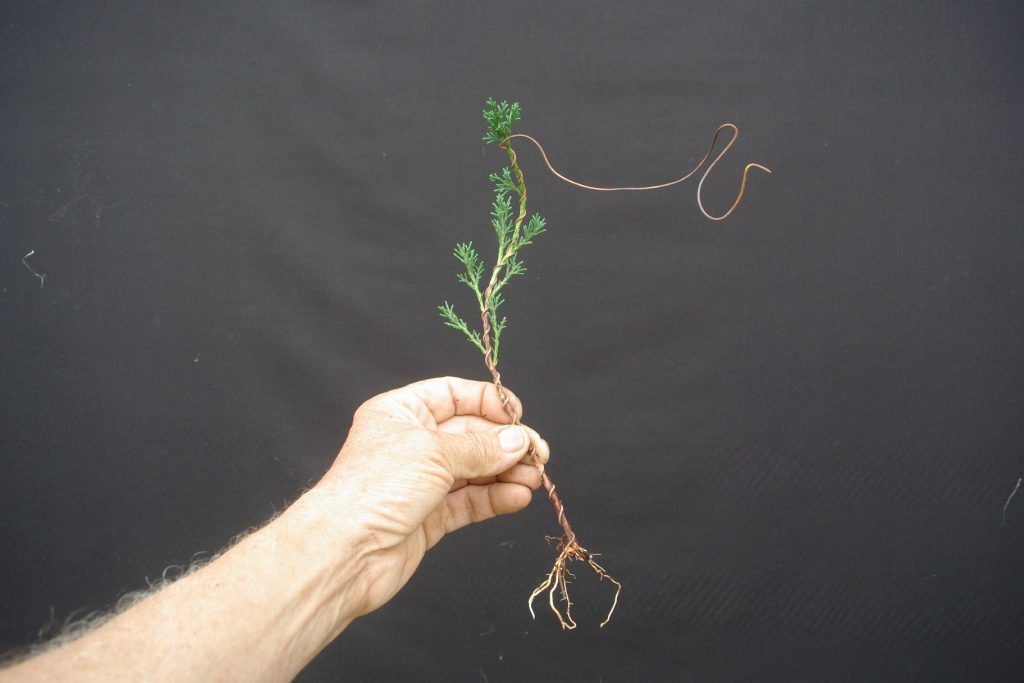
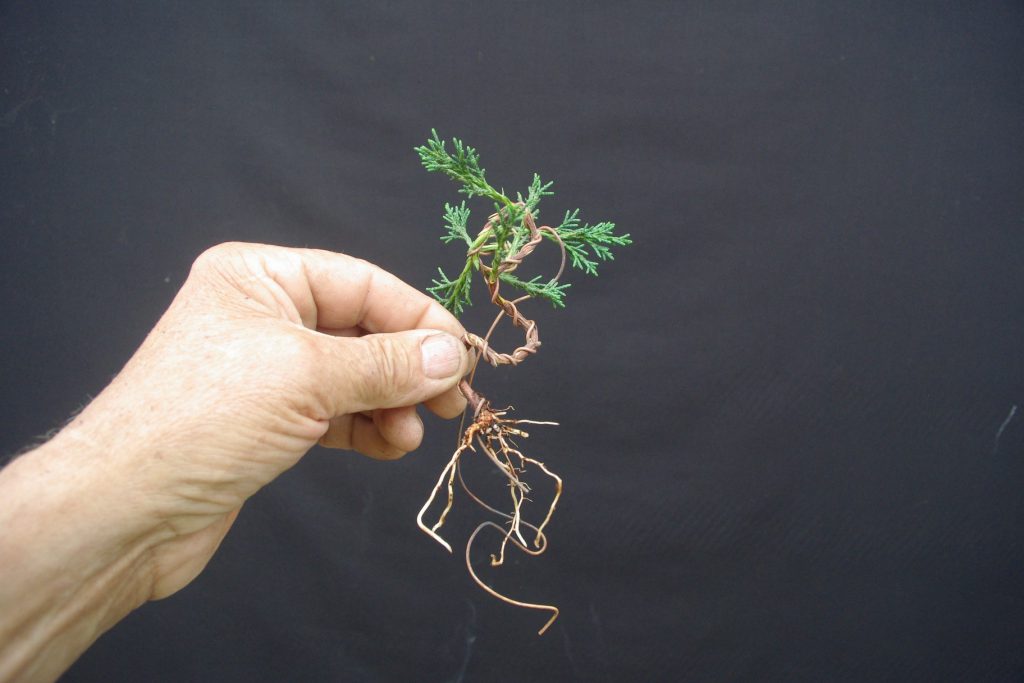
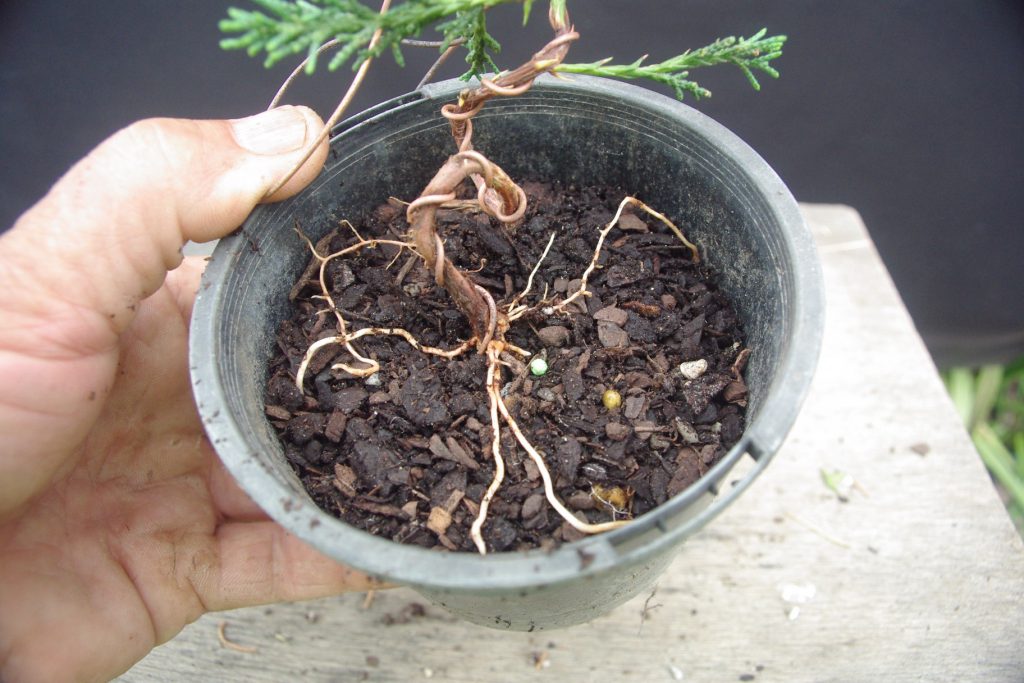
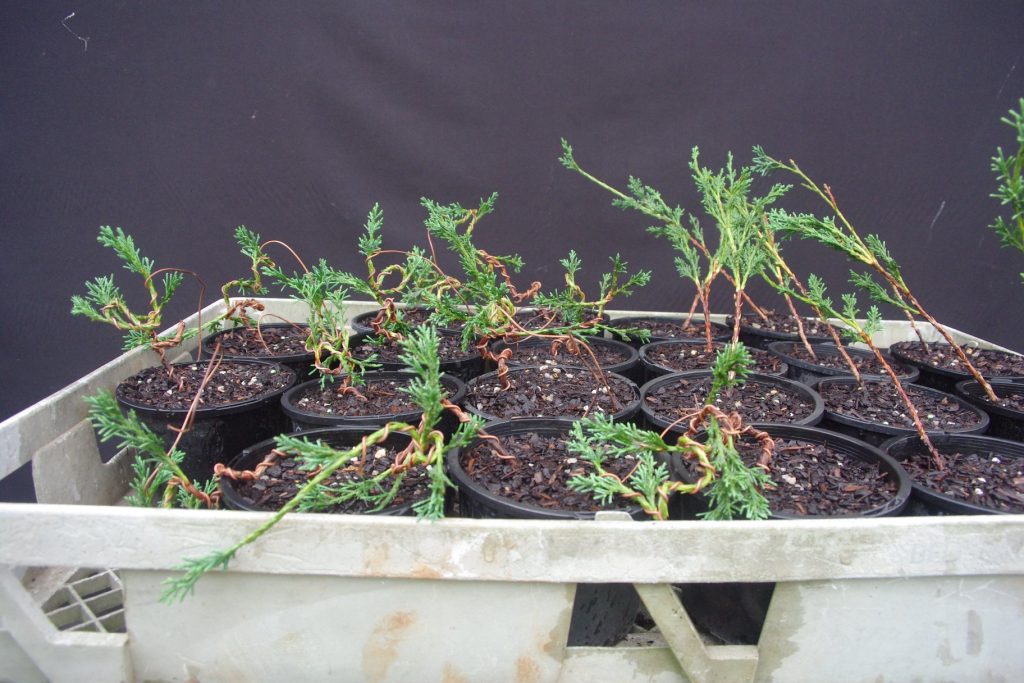
The trees shown above will be ‘set’ in a couple of months and the wires removed before they scar the trunks. Next summer new long shoots will grow and they too will be wired and twisted to match the lower part. It can take 3-5 years to develop enough trunk with character. Some will be sold at that stage, others will then be transplanted into the grow beds where they will grow and thicken for another 5 years or more.
Junipers have a reputation for being difficult to transplant. In initial trials a number died but with experience and adapting techniques suggested by other growers survival rate of Shibui Bonsai shimpaku transplants are now much higher.
One of the frustrating attributes of junipers is that they take ages to show the signs of trauma. They can look fine for months after transplant then suddenly turn brown. Investigation shows the tree has no new roots and has been surviving, sometimes even growing, using resources stored in the trunk and branches. Here at Shibui Bonsai junipers are not offered for sale as freshly transplanted trees. I hold all transplanted junipers until after mid summer to make sure they have really survived the transplant process.
This year’s transplants have grown well through spring and are still looking healthy so I am confident they are well enough to offer them to you.
General bonsai wisdom says that junipers that have been recently transplanted should not then be subjected to more stress of pruning and styling so even though these trees have survived they should be allowed to continue to recover until at least next spring before any more major work.
Unlike deciduous trees where we can see the structure during winter junipers are densely branched evergreens so finding the bonsai among all that foliage can be challenging. These trees would make ideal candidates for workshop specimens.
The dense foliage also makes these difficult to photograph to show the internal structure. If there’s one you would like to see more of please feel free to ask for more photos and I will try to take some shots of particular features as far as it is possible.
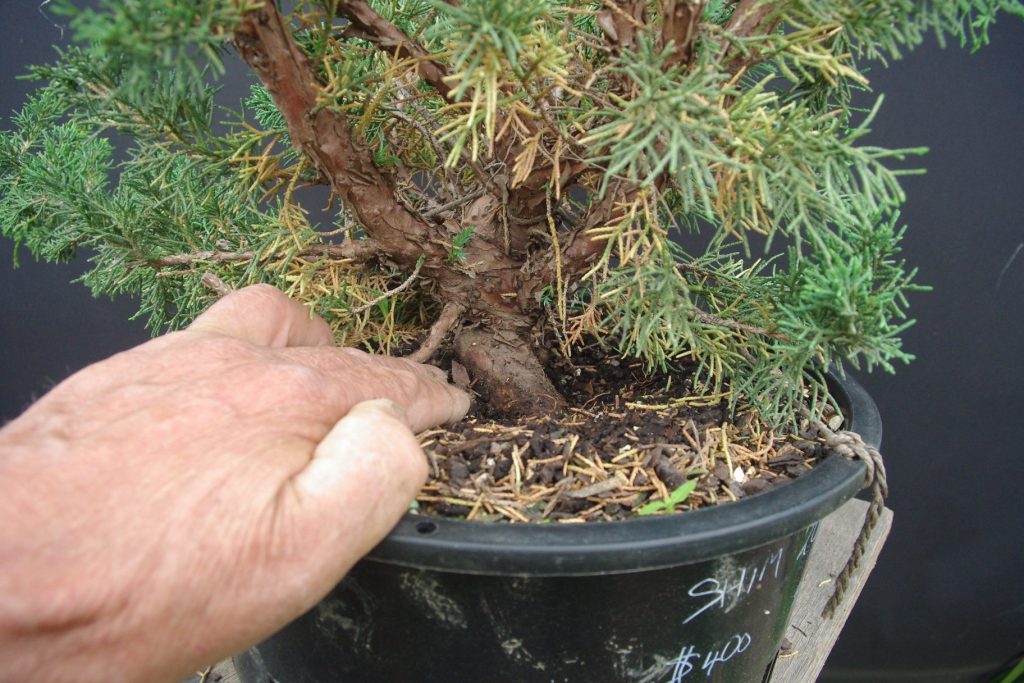
All these junipers have long branches and trunks. They are still flexible enough to wind round to fit into a box for transport but most are still quite bulky so you should expect delivery costs to be up to $80 for some trees to some areas.
